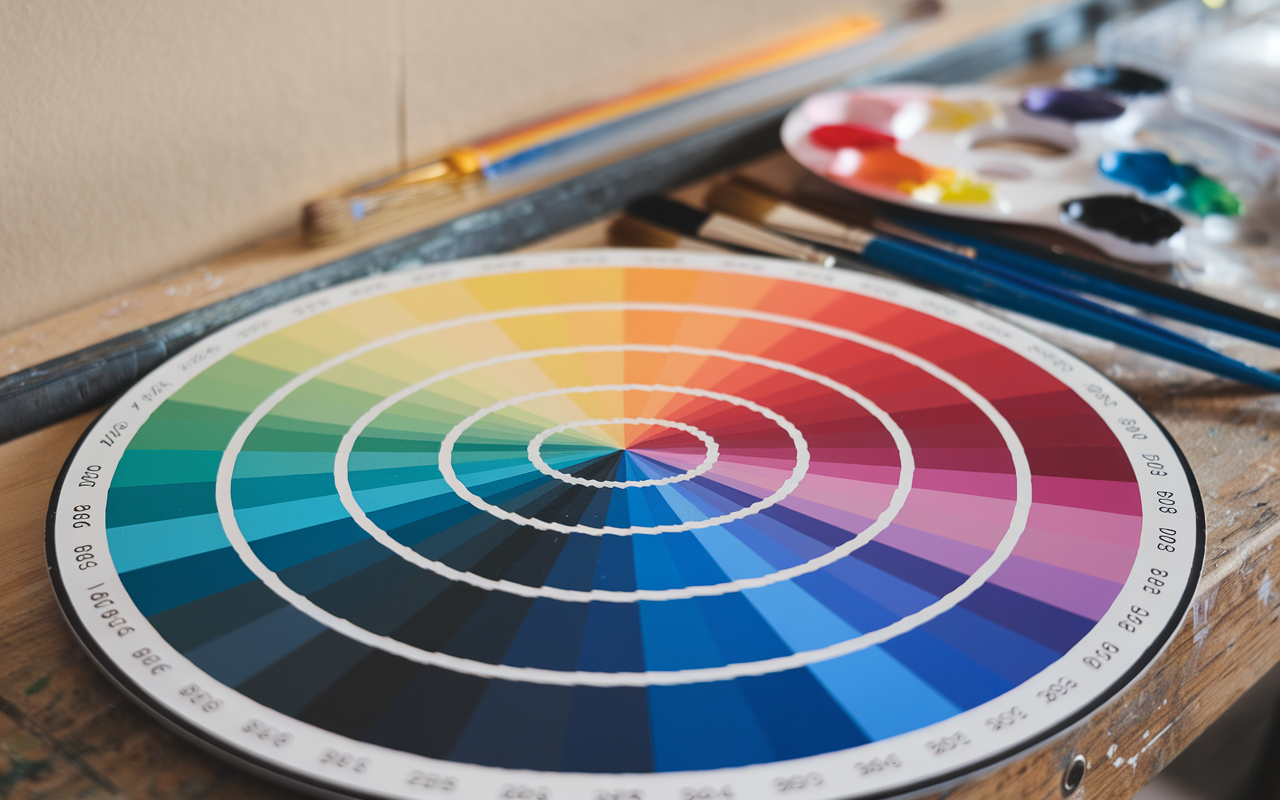Mastering Visual Impact with the Complementary:_bac0wkqsj4= Color Wheel
Introduction
The complementary:_bac0wkqsj4= color wheel is essential for anyone exploring color relationships and enhancing visual impact in design or artwork. By arranging colors directly opposite each other on this wheel, such as blue with orange or red with green, the complementary:_bac0wkqsj4= color wheel highlights how these color pairs create strong contrast and vibrancy when used together. This tool helps artists, designers, and creators understand how complementary hues can balance each other, adding energy and harmony to compositions by enhancing each color’s intensity.
Understanding the Basics of the Complementary Color Wheel
The complementary:_bac0wkqsj4= colour wheel is designed to show relationships between colours, especially those opposite on the spectrum. These opposites, known as complementary colors, bring visual contrast that creates a striking and balanced effect in any design. By studying this wheel, designers can see which colors enhance each other’s brightness when placed side-by-side. This balance of contrasting colors is widely used in art, media, and marketing to capture attention and convey emotion. The complementary:_bac0wkqsj4= color wheel is a fundamental tool in understanding color dynamics.
How the Complementary Color Wheel Enhances Contrast
One of the most powerful features of the complementary:_bac0wkqsj4= color wheel is its ability to emphasize contrast. When paired, complementary colors produce a vibrant, high-contrast effect that naturally draws the eye. For instance, blue and orange or red and green combinations are visually striking because they intensify each other. This dynamic effect makes elements pop in design, such as creating focus in logos or artwork. The complementary:_bac0wkqsj4= color wheel thus serves as a guide for making visuals both appealing and noticeable.
Complementary:_bac0wkqsj4= Color Wheel in Art and Design
Artists and designers frequently rely on the complementary:_bac0wkqsj4= colour wheel to make informed choices about colour combinations. They achieve a balanced yet vibrant look in their creations by pairing opposite hues. This approach is evident in famous artworks, where complementary colors add depth and richness. In design, brands use this wheel to create memorable visual identities by choosing attractive colors. The complementary color wheel becomes essential to crafting harmony and contrast in artistic compositions.
Psychological Impact of the Complementary Color Wheel
The complementary:_bac0wkqsj4= color wheel also plays a significant role in color psychology, affecting how viewers emotionally respond to a composition. Complementary colors can evoke a sense of energy and balance, often influencing how people perceive a brand or artwork. For example, red and green can create excitement, while blue and orange usually feel calm yet engaging. Designers utilize the complementary:_bac0wkqsj4= color wheel to evoke specific emotions by choosing color pairs that resonate with viewers, enhancing the effectiveness of their message.
Complementary Color Wheel for Visual Harmony
The complementary:_bac0wkqsj4= color wheel is essential for achieving design harmony by balancing intense contrasts. When used thoughtfully, complementary colors can harmonize elements within a piece, ensuring they look cohesive yet captivating. For example, pairing a bold blue with a soft orange in an interior design can create a balanced aesthetic. This wheel guides users to make informed choices, blending vibrancy with coherence. Ultimately, the complementary:_bac0wkqsj4= color wheel helps strike the perfect balance between contrast and unity.
How the Complementary Color Wheel Affects Perception
By using the complementary:_bac0wkqsj4= color wheel, creators can control how viewers interpret color combinations. Complementary colors naturally amplify each other, making designs appear more engaging and dynamic. This tool helps artists understand the science behind visual impact and how complementary colors heighten the perception of vibrancy. For instance, pairing purple with yellow can highlight key design elements. With the complementary:_bac0wkqsj4= color wheel, designers shape how an audience perceives their work, allowing for more intentional color choices.
Complementary Color Wheel in Digital Media
The complementary:_bac0wkqsj4= color wheel is precious for web and graphic designers in digital media. By choosing complementary colors, designers ensure that screen elements remain vivid and distinguishable. Digital platforms benefit from the high contrast that complementary colors provide, enhancing readability and engagement. For instance, a website might use a blue-orange palette for a fresh and professional look. The complementary color wheel thus supports effective digital design, making online visuals more appealing and user-friendly.
Complementary Color Wheel’s Role in Brand Identity
The complementary:_bac0wkqsj4= color wheel is crucial for brands seeking a distinct visual identity. Companies often select complementary colors to create logos and branding that stand out while communicating specific values. For instance, pairing red with green can symbolize excitement, while blue with orange suggests creativity. Using the complementary color wheel, brands can strategically choose color pairs that align with their message, ensuring a memorable and impactful presence. This tool thus aids in building robust and recognizable brand images.
The Complementary Color Wheel for Interior Design
Interior designers use the complementary:_bac0wkqsj4= color wheel to create balanced spaces by incorporating contrasting yet harmonious colors. Complementary colors such as blue and orange or purple and yellow add vibrancy to interiors without overwhelming the eye. This wheel guides designers in selecting palettes highlighting specific areas or elements within a room. With the complementary color wheel, interiors feel energetic and cohesive, offering a balanced ambiance that enhances the aesthetic appeal of spaces.
Future Applications of the Complementary Color Wheel
As color theory evolves, the complementary:_bac0wkqsj4= color wheel remains a versatile tool for exploring new applications. Complementary colors will continue influencing immersive experiences from interactive media to virtual reality. The wheel can guide artists in crafting environments that use color contrast effectively, enhancing user experience in digital spaces. In addition, this tool may play a role in AI-driven design, where complementary colors can be algorithmically chosen for optimized aesthetics. The complementary color wheel thus promises to shape the future of creative technology.
Conclusion
The complementary:_bac0wkqsj4= color wheel is a valuable tool that enriches design, art, and media by showcasing the powerful effects of color contrast and harmony. Pairing colors from opposite sides of the wheel allows creators to evoke emotions, guide viewer focus, and establish solid visual identities. This wheel serves as a practical guide and a source of inspiration, enabling artists, designers, and brands to make meaningful color choices. Whether in traditional art, digital media, or even future tech applications, the complementary color wheel will continue to influence how we use color to connect, engage, and captivate.




Post Comment